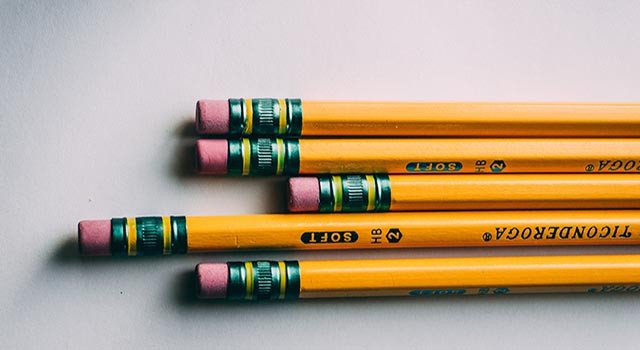It’s February and that means we’re smack in the middle of winter, which is also the middle of the school year. It’s the season when kids fervently hope for snow days and parents hope they don’t happen. As we head towards the second half of the school year, you’ve probably attended a few parent-teacher conferences and discussed your child’s education.
Like peanut butter and jelly, school and vision go hand-in-hand. Both are important partners in ensuring that children excel in their learning, extracurricular activities, and relationships with their peers.
ADD/ADHD and Vision Problems
Did you know that certain vision problems can mask themselves as behavioral or learning difficulties? In fact, education experts often say that 80% of learning is visual.
A 3rd grader may be misdiagnosed with ADD or ADHD if they display behaviors like being fidgety, having difficulty focusing or concentrating, or having a short attention span. These symptoms may not always be purely behavioral; they could be vision-related. A child who experiences blurry vision, suffers from headaches or eyestrain, or itches their eyes excessively may, in fact, have a refractive error such as myopia (nearsightedness), hyperopia (farsightedness) or astigmatism, or another condition such as convergence insufficiency.
Undiagnosed myopia, for example can cause these same types of behaviors that are commonly attributed to attention disorders. That’s because if your child has to squint his eyes to see the board clearly, eyestrain and headaches are bound to follow. Struggling with reading or writing is common too (but not in myopia, but in hyperopia or farsightedness, where the child would see distance fine, but need glasses to see up close). Other vision disorders can cause similar behavior patterns. An additional challenge is that kids don’t always express their symptoms verbally, and often they don’t even realize that other people see differently than do.
This can also impact kids emotionally. When they feel like they’re not keeping up with their peers or their learning is inferior in some way, this may lead the child to act out verbally or even physically.
Distinguishing between colors is an important skill for early childhood development. While color vision deficiency affects both children and adults, kids, in particular, can experience difficulty in school with this condition. Simply reading a chalkboard can be an intense struggle when white or yellow chalk is used. When a teacher uses colored markers on a whiteboard to draw a pie chart, graph, or play a game, this can be a difficult experience for a young student with color blindness. A child, his or her parents, and teachers may even be unaware that the child is color blind, although in truth, being color blind is rarely a cause of learning difficulties or behavior disorders.
What School Vision Screenings Miss
Many parents believe that an in-school vision screening is good enough. However, an eye chart test only checks for basic visual acuity, so kids with blurry or double vision, for example, may be able to pass a vision screening while still struggling to read, write, or focus on the board. Children who have problems with their binocular vision, which means using both eyes together to focus on something, can pass the screening when they use just one eye to read the chart.
School vision screenings also don’t test for strabismus, or crossed eyes, which needs to be addressed early to prevent amblyopia, or the development of a lazy eye, which cannot be fixed later in life.
Studies show that a whopping 43% of children who have vision problems can successfully pass a school vision screening. This means that the vision test may fail to detect the more subtle but significant and treatable vision problems. Early detection and diagnosis is critical to maintaining healthy eyes. That’s why it’s so important to make eye care a part of your child’s healthcare routine.
The Importance of Yearly Eye Exams
The #1 way to do this is to schedule annual eye exams. Your eye doctor can perform a comprehensive pediatric eye exam to check visual acuity, visual clarity, binocular vision, and screen for any eye diseases or vision problems.
Because children develop so rapidly at different ages, it’s essential that eye exams are done at specific stages of their young lives. In fact, The American Optometric Association (AOA) recommends regular eye exams at age 6 months, 3 years, before school starts, and every 2 years thereafter. Dr. Chynn published a landmark study in the #1 eye journal in the world, Ophthalmology, back when he was at Harvard in 1996, proving that annual eye exams are necessary in asymptomatic healthy people to detect any problems early, when they can be more easily addressed.
Simply being aware of the tendency to associate a child’s learning issues with a learning disability or attention disorder instead of an underlying vision problem is critical for parents and educators. Both are partners in a child’s education and they must work together to ensure that each child gets the health care and attention he or she needs.
If you notice changes in your child’s schoolwork, behavior with friends or in sports or other after-school activities, it may be time to schedule an eye exam. You’ll want to be sure that your kids have all the tools they need to succeed in school and beyond.
Park Avenue LASEK and Dr. Chynn accept all medical insurances, and some vision plans, and also are one of the few practices in NYC that offer Ortho-K, which is a treatment where children can wear something like a retainer overnight, and then not have to wear glasses or contacts during the day, when they are too young to get laser vision correction.


